Rome is a site of ancient treasures, a maze of wonders to continuously lose one’s way in. It’s a dizzying effect, being surround by so much sumptuous beauty. For this reason, we’ve selected two completely different places to visit, one modernist, the other decidedly contemporary. EUR is a neighbourhood to walk around in, primarily admiring the buildings from the outside. MAXXI on the other hand is best experienced from inside, where its many twists and turns reflect the often organic visions of Zaha Hadid.
EUR – Future Ruins
The shape of things is often a consequence of when they were designed. A chair has a certain expression because of the techniques available at the time it was made, as well as of the then-current ideas of what a chair should look like. This is true of smaller things (such as accessories, utensils, and jewellery) as well as of things designed on a larger scale, like buildings, infrastructure, and city planning.
To explore the aesthetics of everyday life is to learn about the ideas and technology
of the past.
A building is not only a place to live or work, but can be viewed as a proposal, put forth by architects and commissioners, of what one’s surroundings should like and what ideas it should represent.
Ideology and architecture have a particularly strong relationship with one another. The planning of buildings and cities mirror the aspirations and dreams of the ruling class.
In 1936, Benito Mussolini chose an area, south of central Rome, to be the place for the upcoming World fair E42 (short for Esposizione 1942 and later changed to EUR, Esposizione Universale di Roma). Here, he would showcase the beauty of Fascist ideology by creating a city with strong links to Roman building traditions, using the symbols of the past to underpin the strength of his own political movement.
The size of EUR is the equivalent of Rome’s Centro Storico, subtly alluding to how a new historical period, similar to the Roman Empire, now was about to commence in Italy.
EUR was to be inaugurated in time to celebrate the twenty year-anniversary of Fascism, but came instead to represent its demise. Initially planned under the direction of Marcello Piacentini, the design was clearly inspired by a combination of Roman imperial town planning and Italian rationalism, developed into a minimalist form of neoclassicism, marked by a consistent use of symmetry and a strive for simplicity.
Its most famous building, Palazzo della Cività Italiana, is a good example of the many interconnections between Fascist and Ancient Roman architecture.In everyday speech, it is referred to as the Colosseo Quadrato, as its design is inspired by Rome’s ancient Colosseum, but translated into a square space by the three architects Giovanni Guerrini, Ernesto La Padula and Mario Romano. The goal was to show the world the superiority of Italian architecture, but due to the aftermath of World War II, the building was never used as originally intended. Its strict and clean surface, lacking ornaments, communicates a uniform structure in line with Fascist architectural ideals. On all four sides of the building, the inscription “Un popolo di poeti, di artisti, di eroi, di santi, di pensatori, di scienziati, di navigatori, di trasmigratori” (in English: “A people of poets, artists, heroes, saints, thinkers, scientists, navigators, transmigrators”) is imprinted into the façade.
In a documentary for Italian television, aired in 1972, Federico Fellini expressed his view of the Colosseo Quadrato as a “house built for ghosts, or statues”, referring to its metaphysical aspects, ultimately summarising that the entire EUR area, “gives an impression of lightness, of living inside a painting… There are no rules inside a painting, except for aesthetic ones. It is a decadent neighbourhood, which fascinates me, because it’s the product of some sort of delirious dream that was broken and then transformed into something else.”Fascist architecture gained popularity with the rise of modernism and ultranationalism.
The philosophy behind the style is that it should showcase a unified, economically stable nation, in stark contrast to the chaos that had ensued after World War I. In many ways, the design and layout of the area operate as three-dimensional propaganda, promoting the image of a strong and powerful government.
The buildings were designed on purpose to convey a sense of awe and intimidation to the visitors. Interestingly, they were not only planned to be impressive during the reign of Fascism.
Materials such as limestone, as well as other durable stones including tuff and marble, were used in order to ensure that the buildings also would become beautiful ruins.The intention was that EUR, after the period of Fascist rule had ended, would appear in the same grand but derelict state that defines the ruins of the Roman Empire in central Rome – material memories of a time of greatness.
For Fascism, however, this period barely began before its political and ideological influence came to an end.
MAXXI – an ultra-modernist surprise
In a city like Rome, where history is everywhere, and every street corner seems to carry deep cultural significance, sometimes you long to see something new, something that hasn’t already been part of the eternal city for hundreds of years.MAXXI – which is not one but two museums, one dedicated to art and one to architecture – opened its doors as late as 2010, making it a very recent contribution.
Already the same year, the project was awarded the Stirling Prize of the Institute of British Architects, and was called by The Guardian, “Hadid’s finest built work to date”. Designed by Zaha Hadid, the museum offers an almost unique experience to its visitors, not easily translated into written language.
Taking more than ten years to build, MAXXI (short for Museo Nazionale delle Art del XXI Secolo, or National Museum of Art for the 21st century) is a national museum, managed by a foundation created by the Italian ministry of cultural heritage.
It is the first Italian public museum devoted to contemporary creativity, arts and architecture. The exhibition halls can be considered artistic creations in their own right, and the ways in which they are connected with one another creates a sense of the building being present, watching and gently guiding her guests. In this way, MAXXI can be said to supersede notions of the art museum as simply offering a contextual frame for the art on display, to instead suggest that the space in some ways can be equally important as the artworks.
The best word to describe a visit to MAXXI is “surprise”, as one can never be sure of what new angle, perspective or play with space awaits around the corner.
The suspended walkways twist and turn, and suddenly, the space will open up and allow the visitor to have an overview of several stories at the same time. It’s often said that windows reveal the soul of a building, but at MAXXI, the windows do more than that, as they affect the very structure and shape of the museum building.
MAXXI is instantly recognizable as a work by Hadid, defined by her characteristic futuristic approach, with curving facades, sharp angles and the consistent use of concrete and steel.





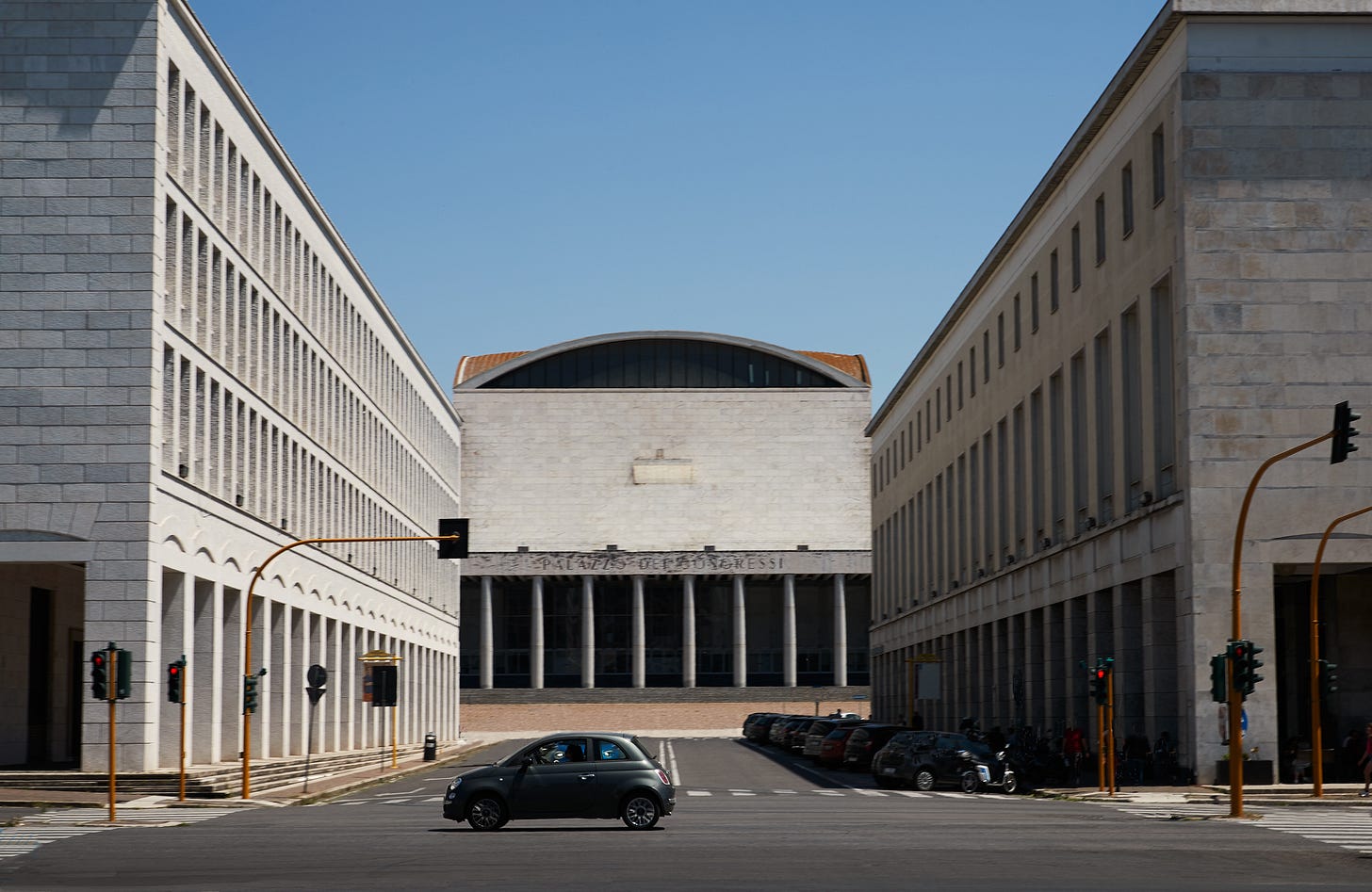
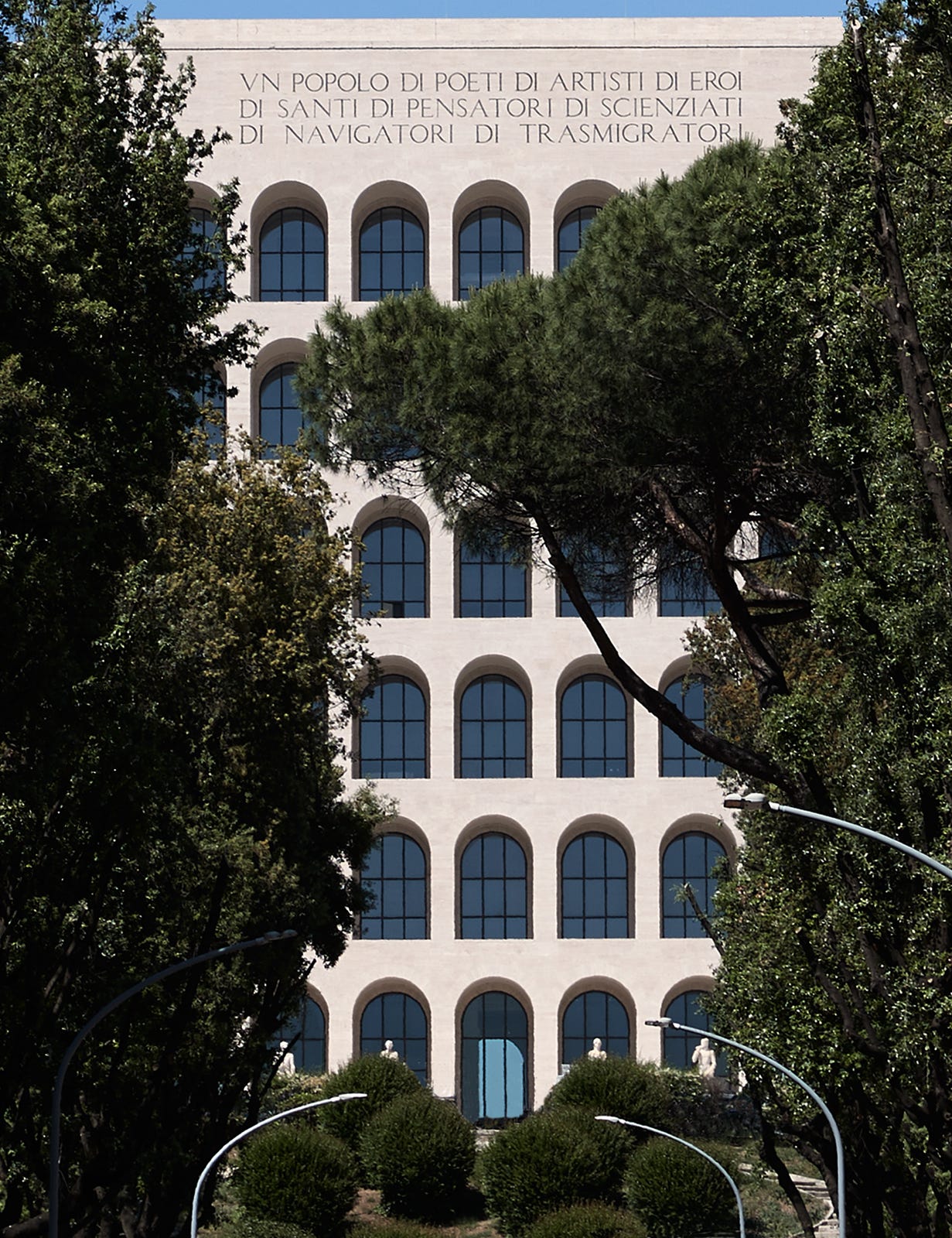
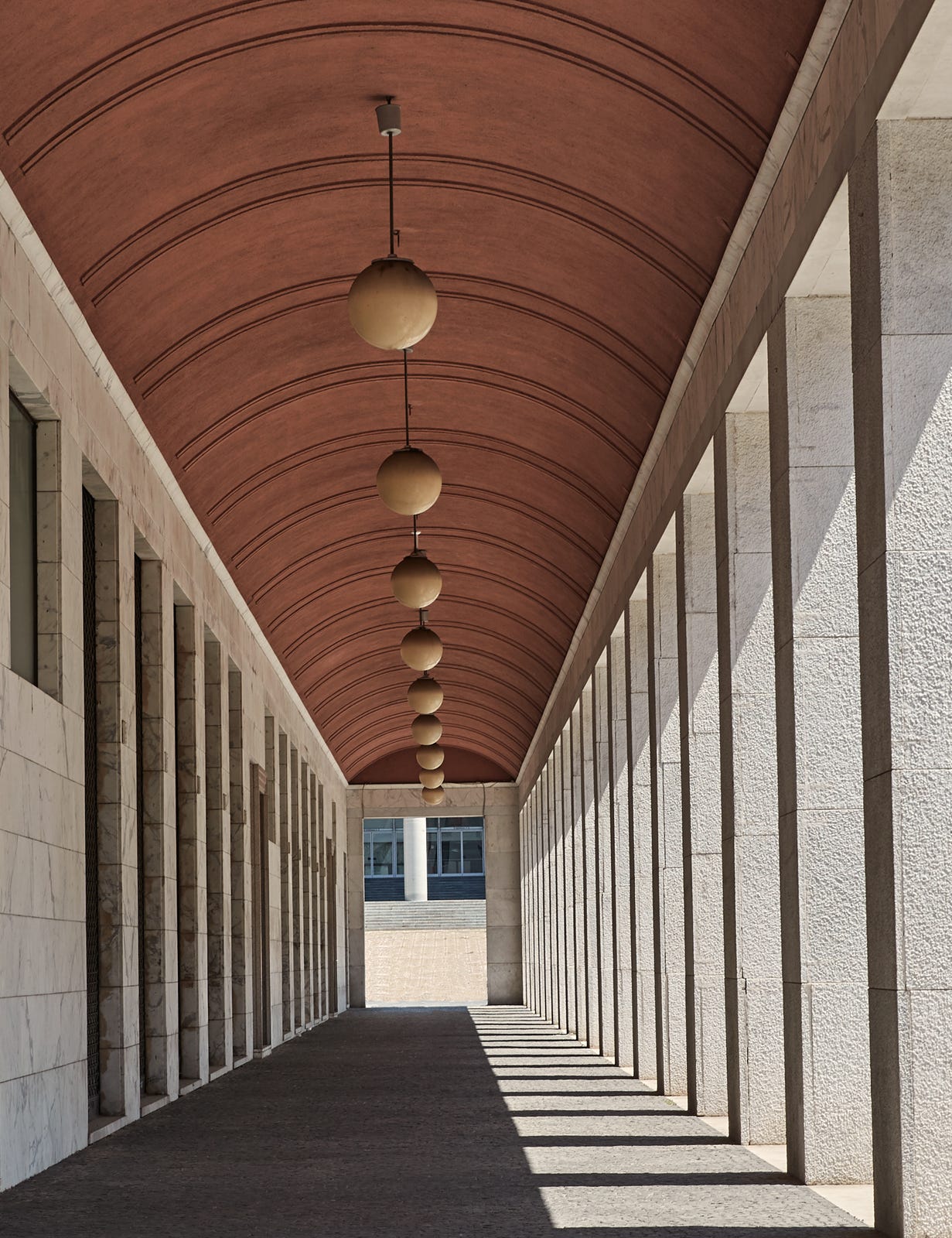
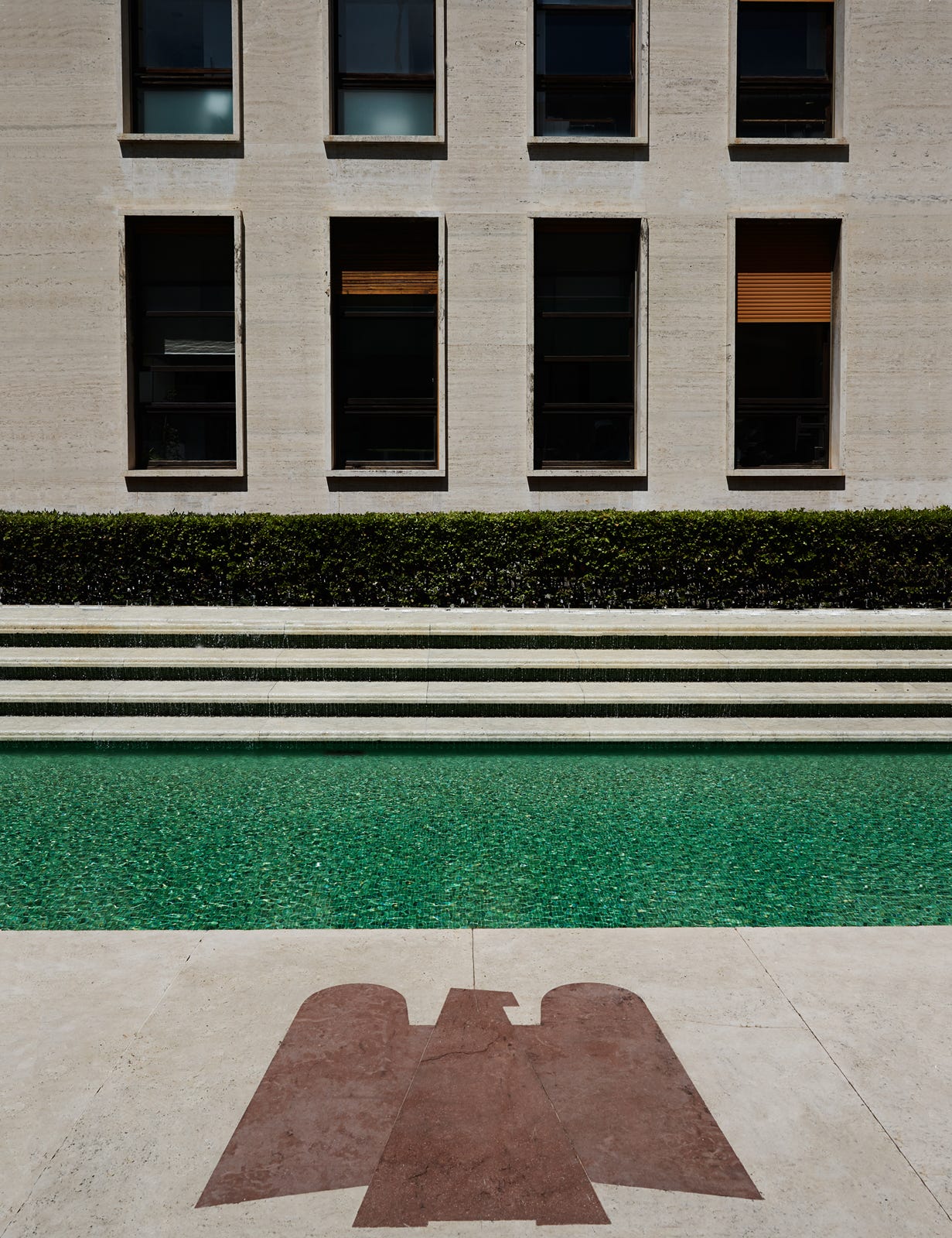
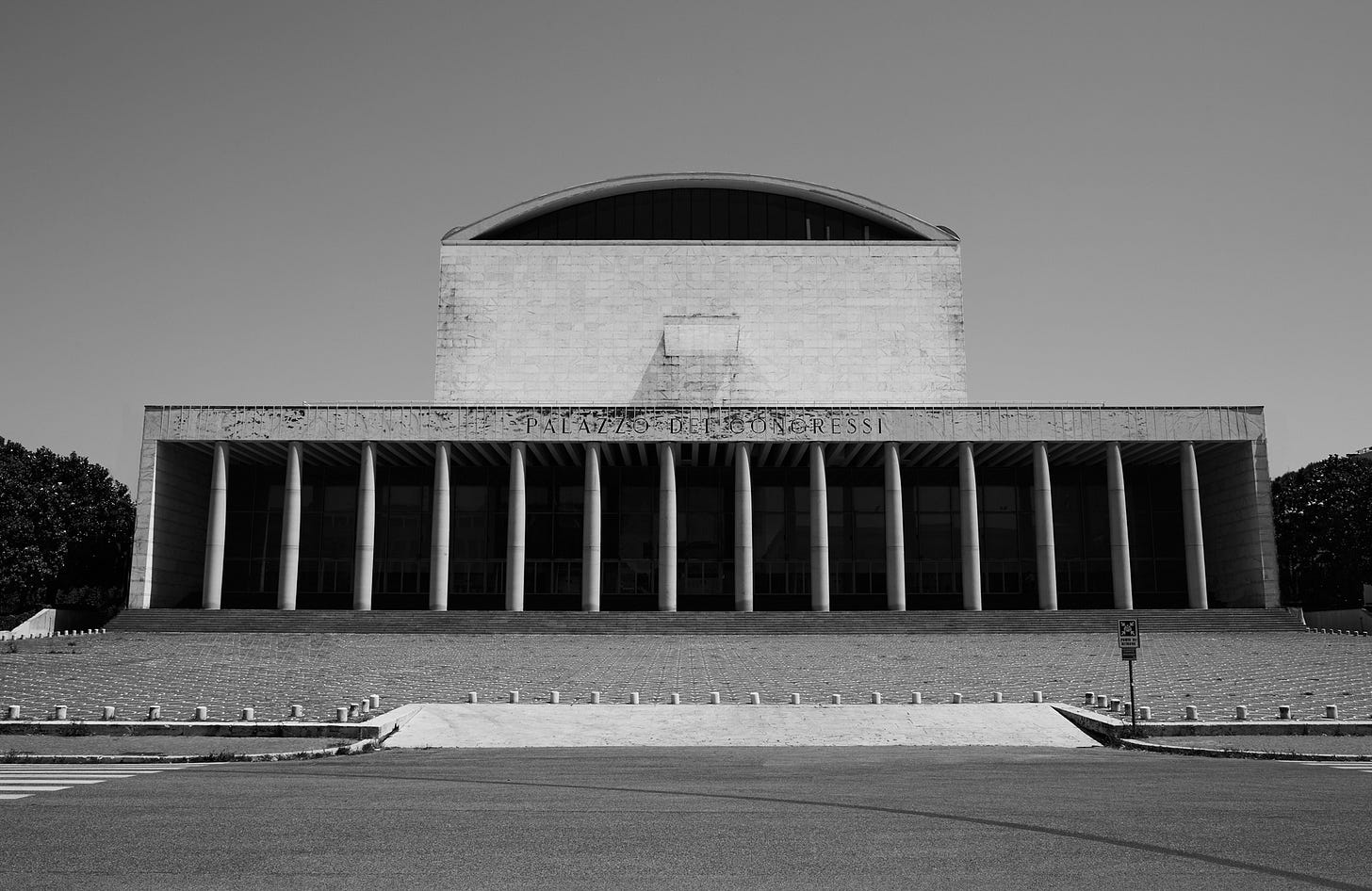
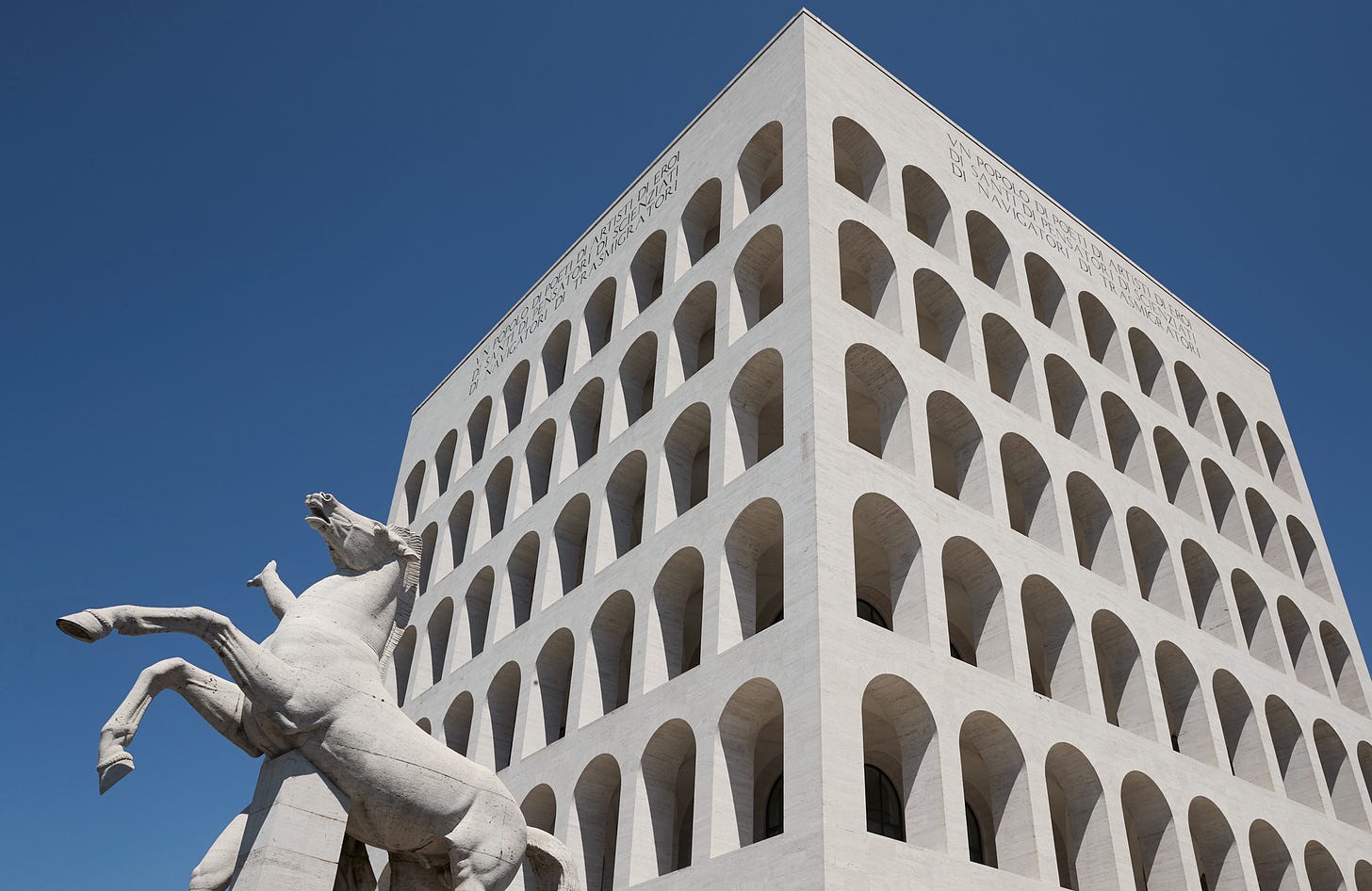
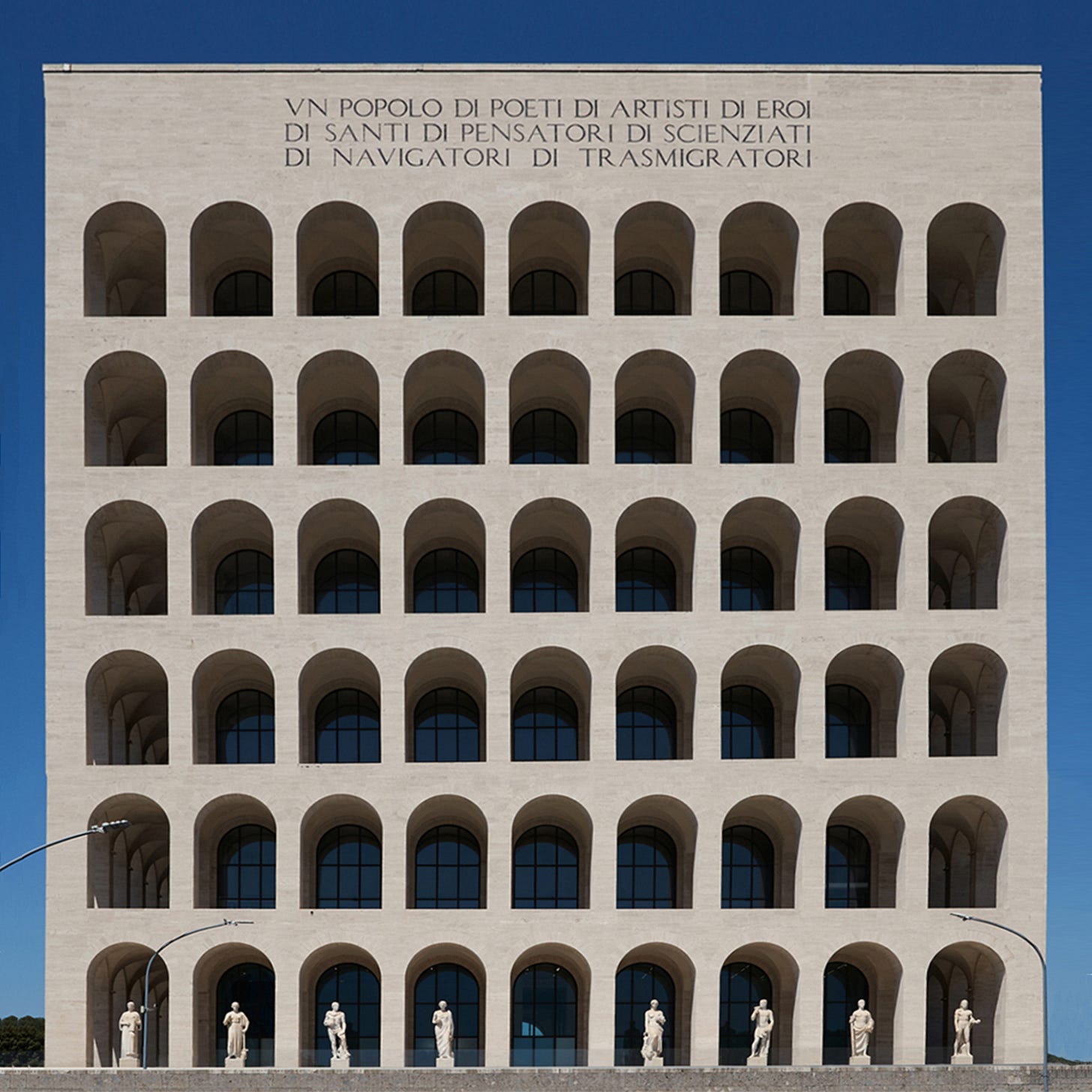
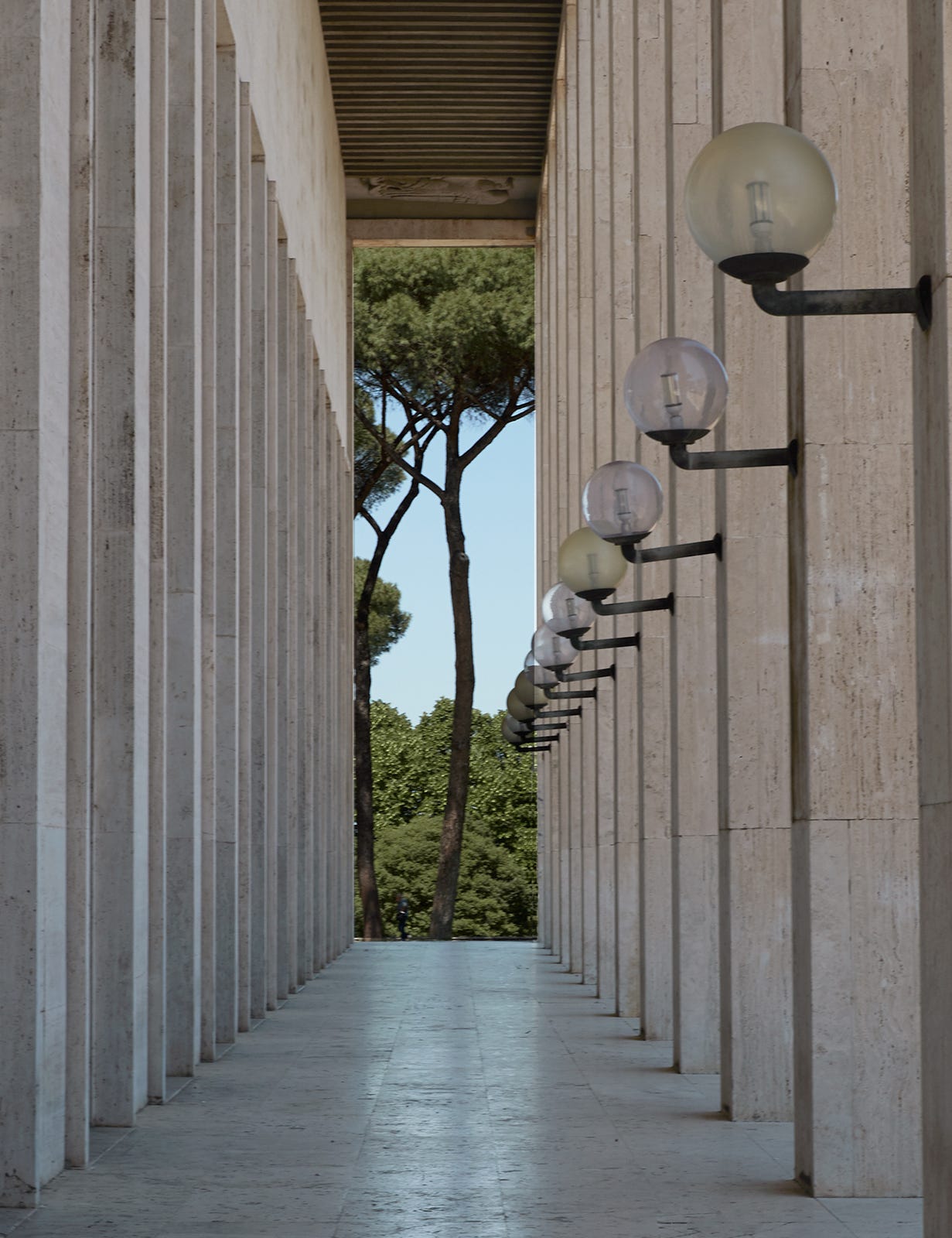
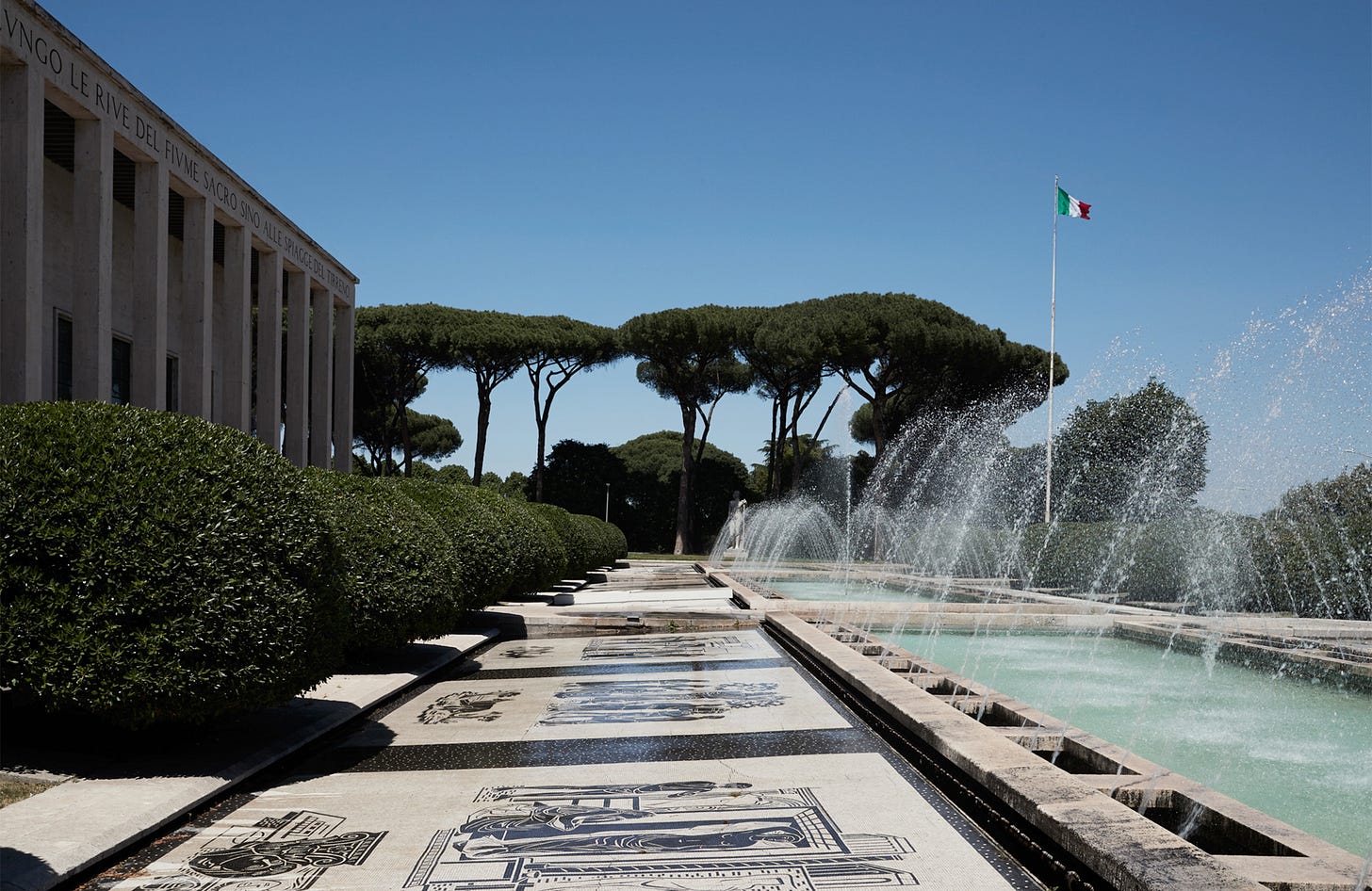
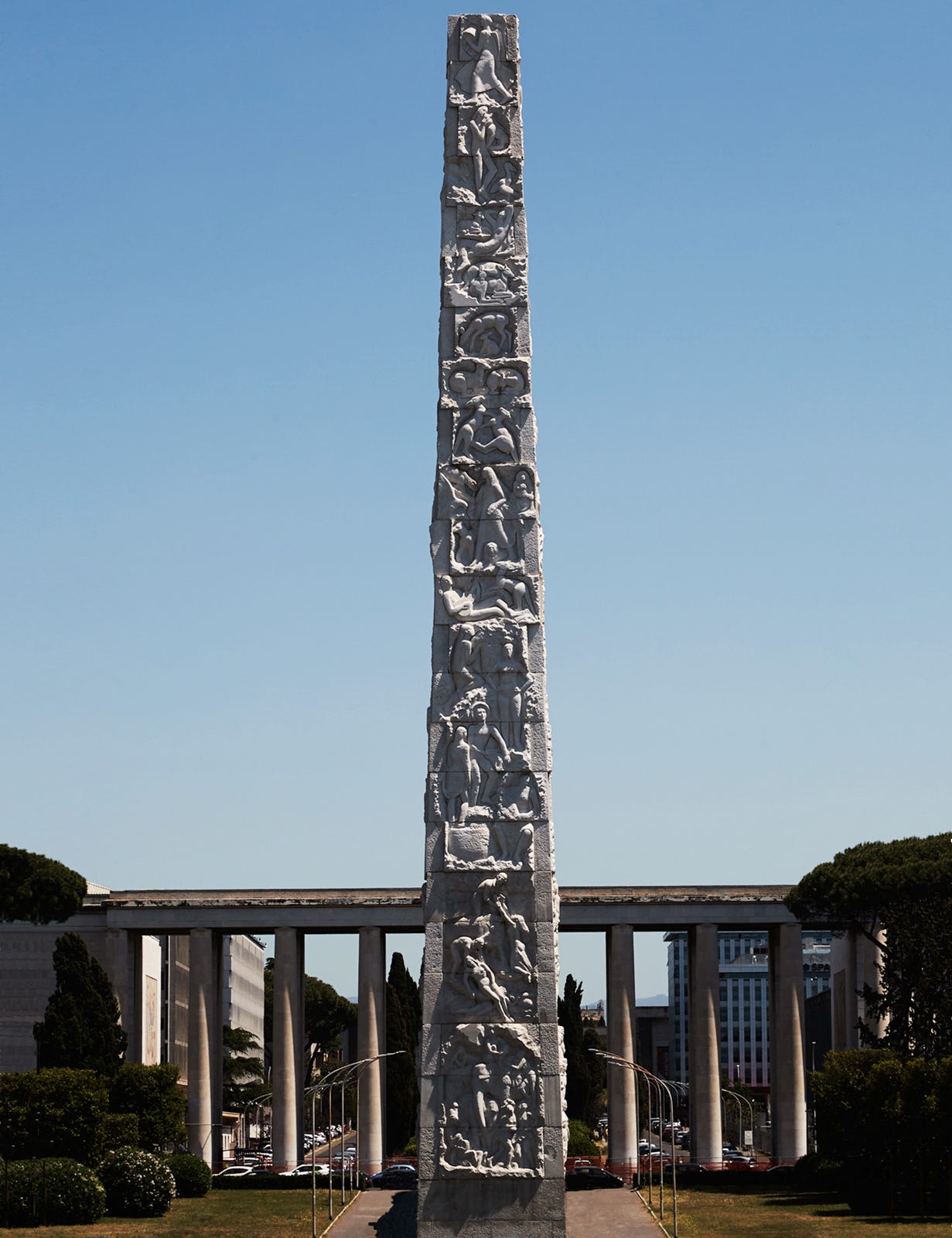
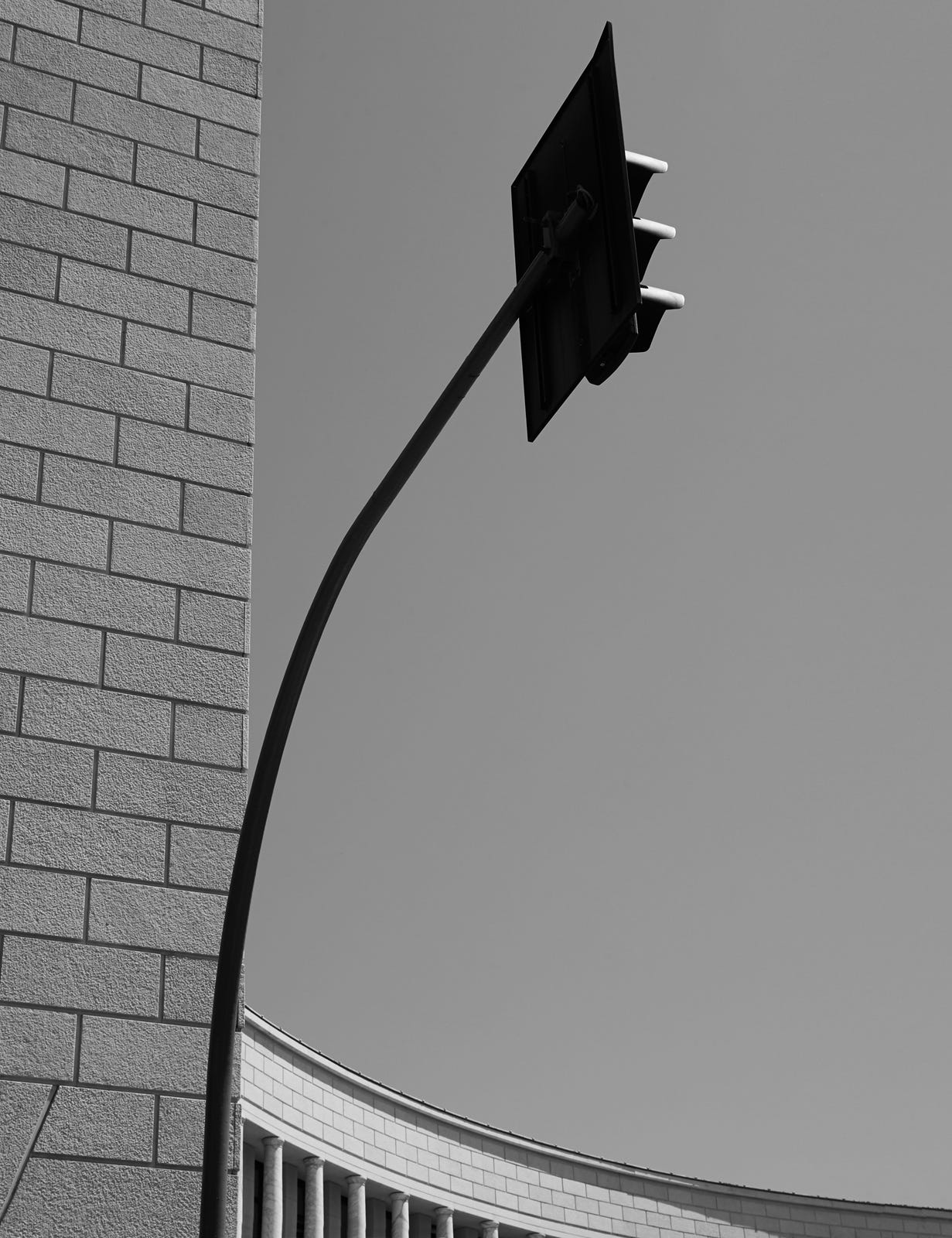

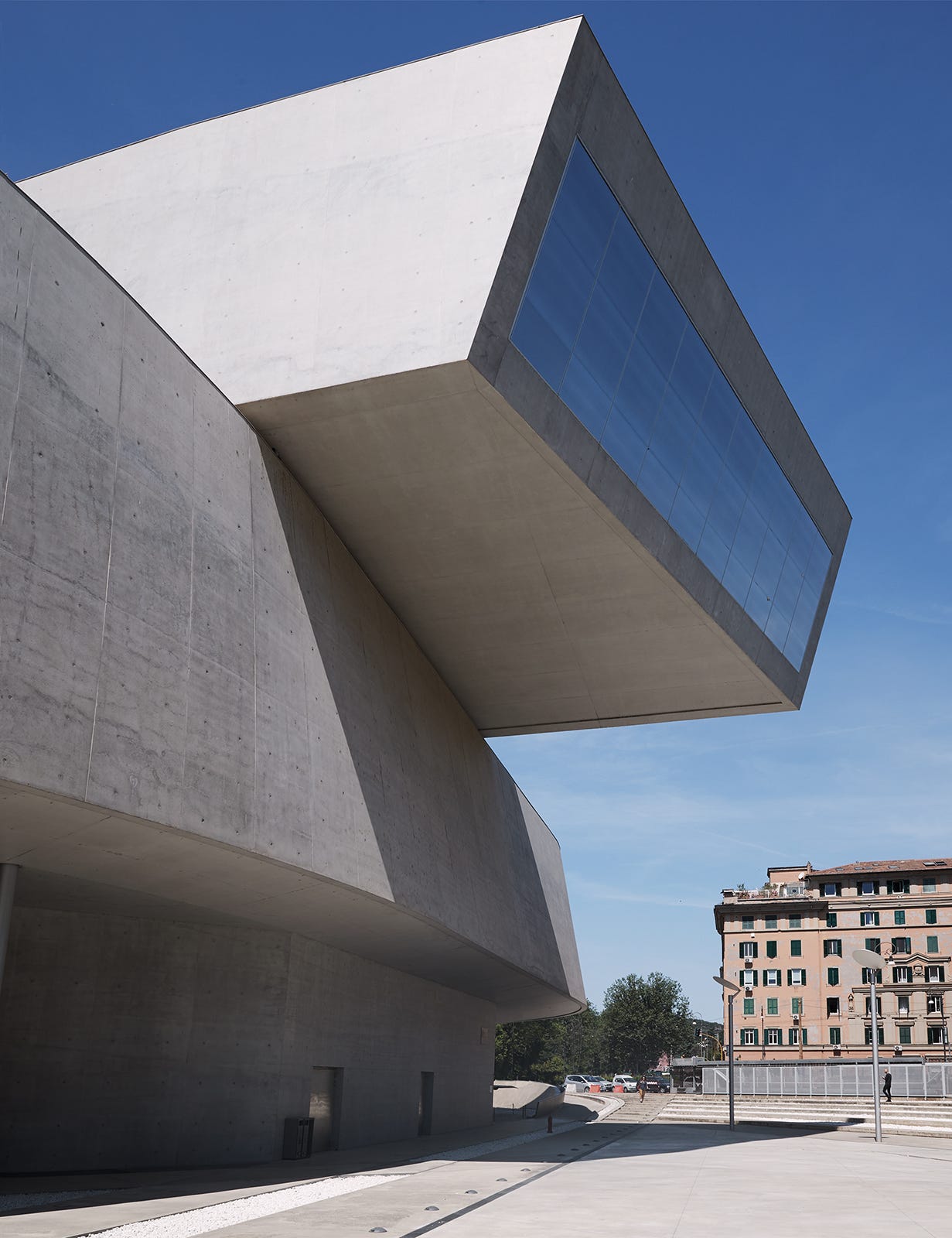
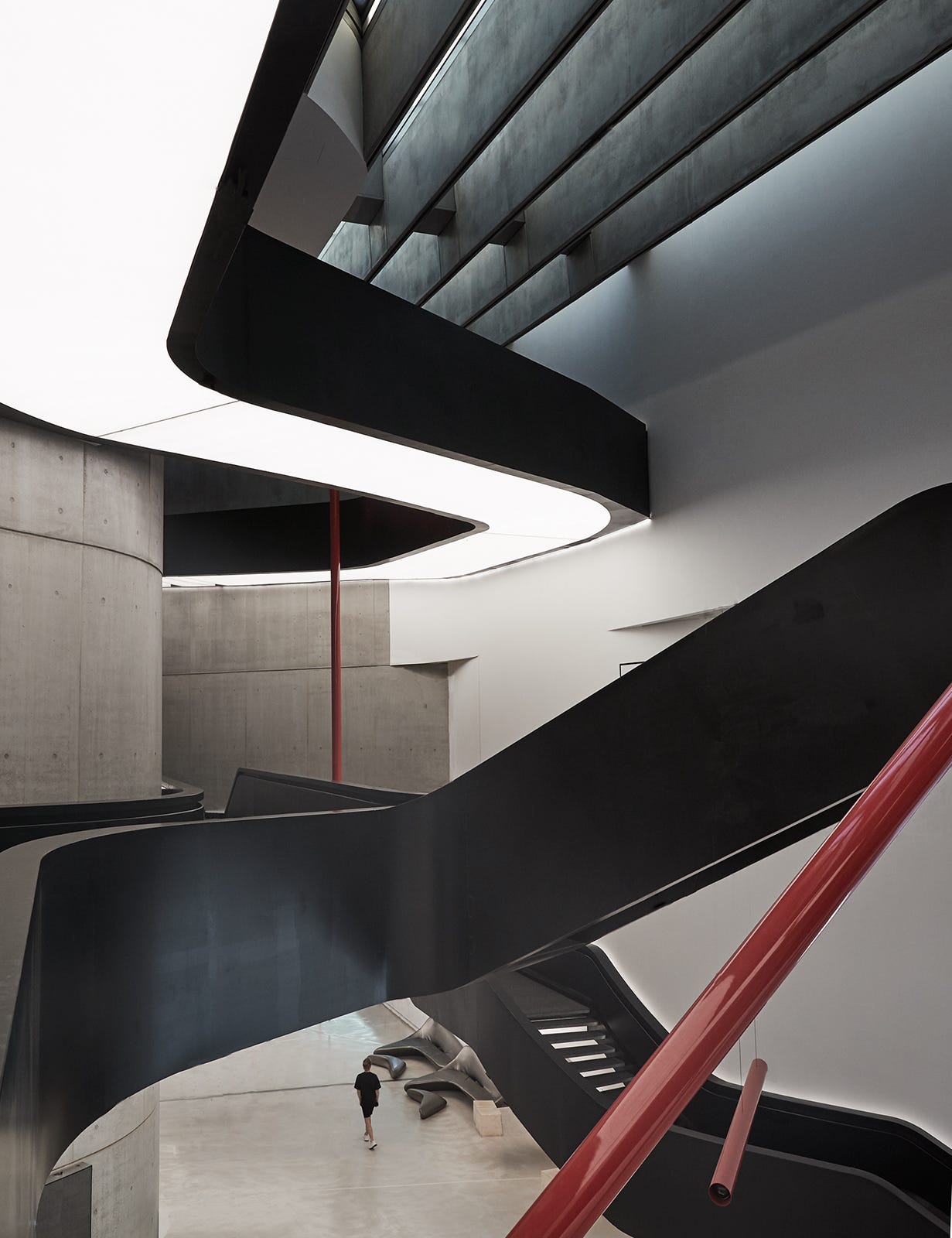
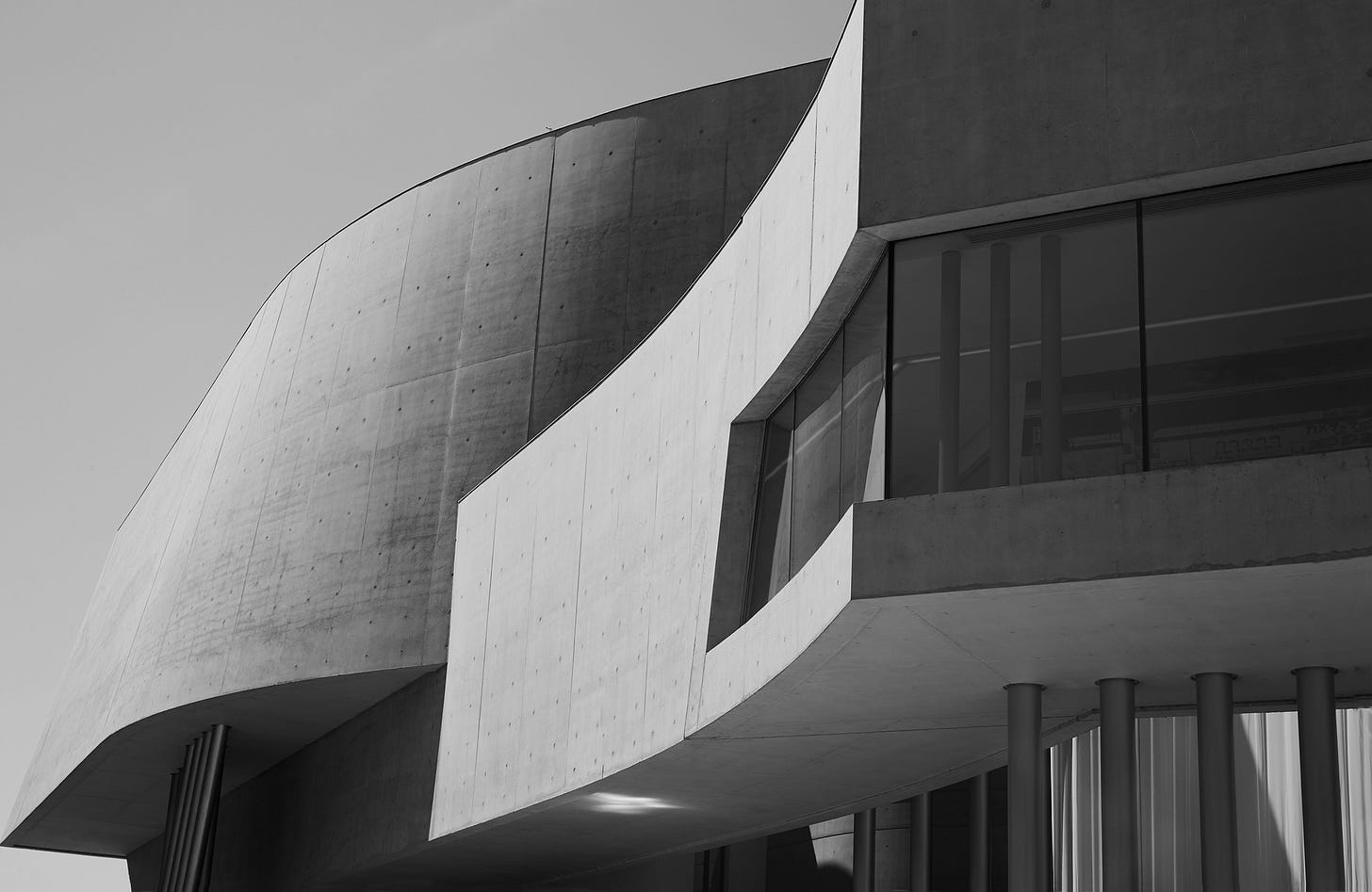
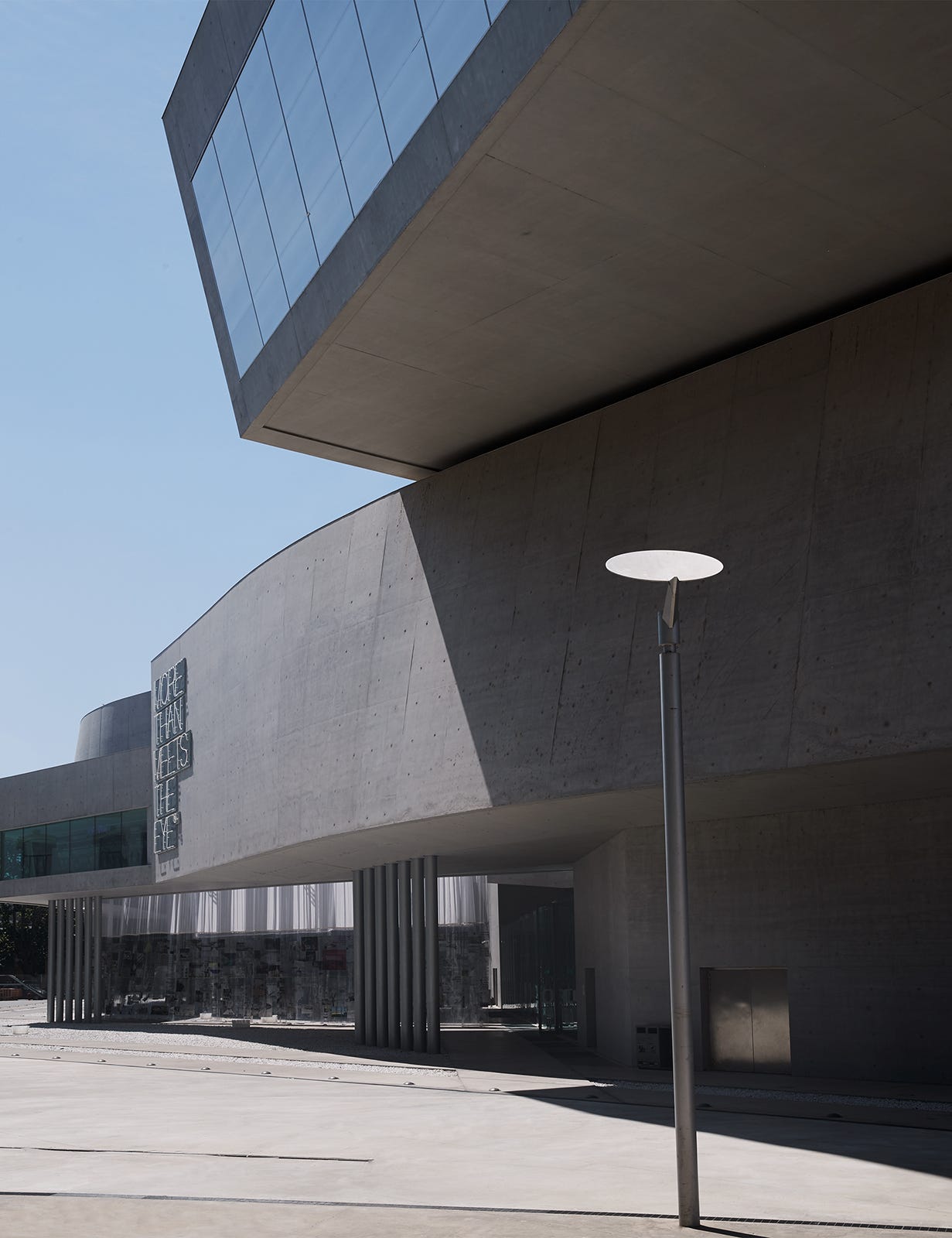
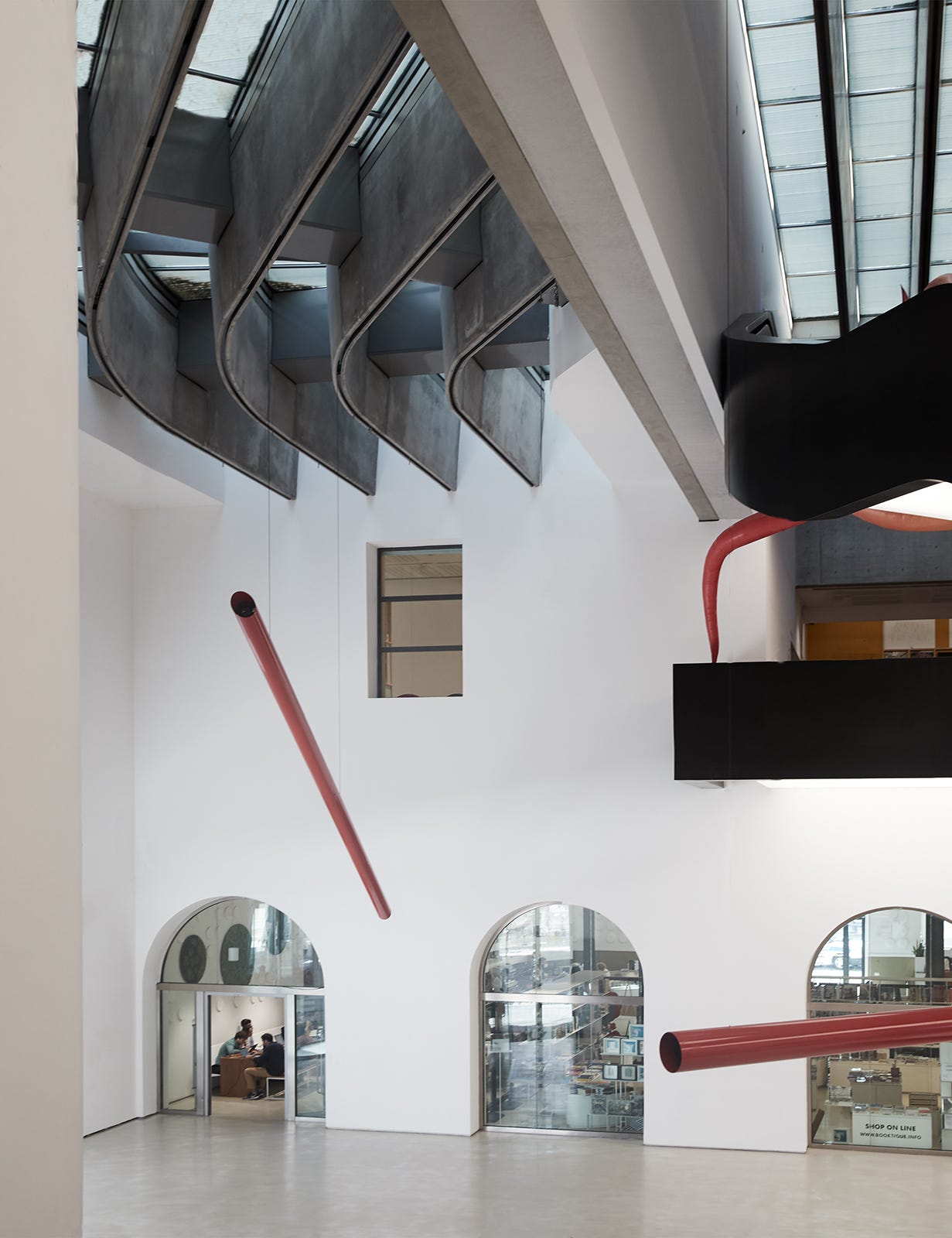
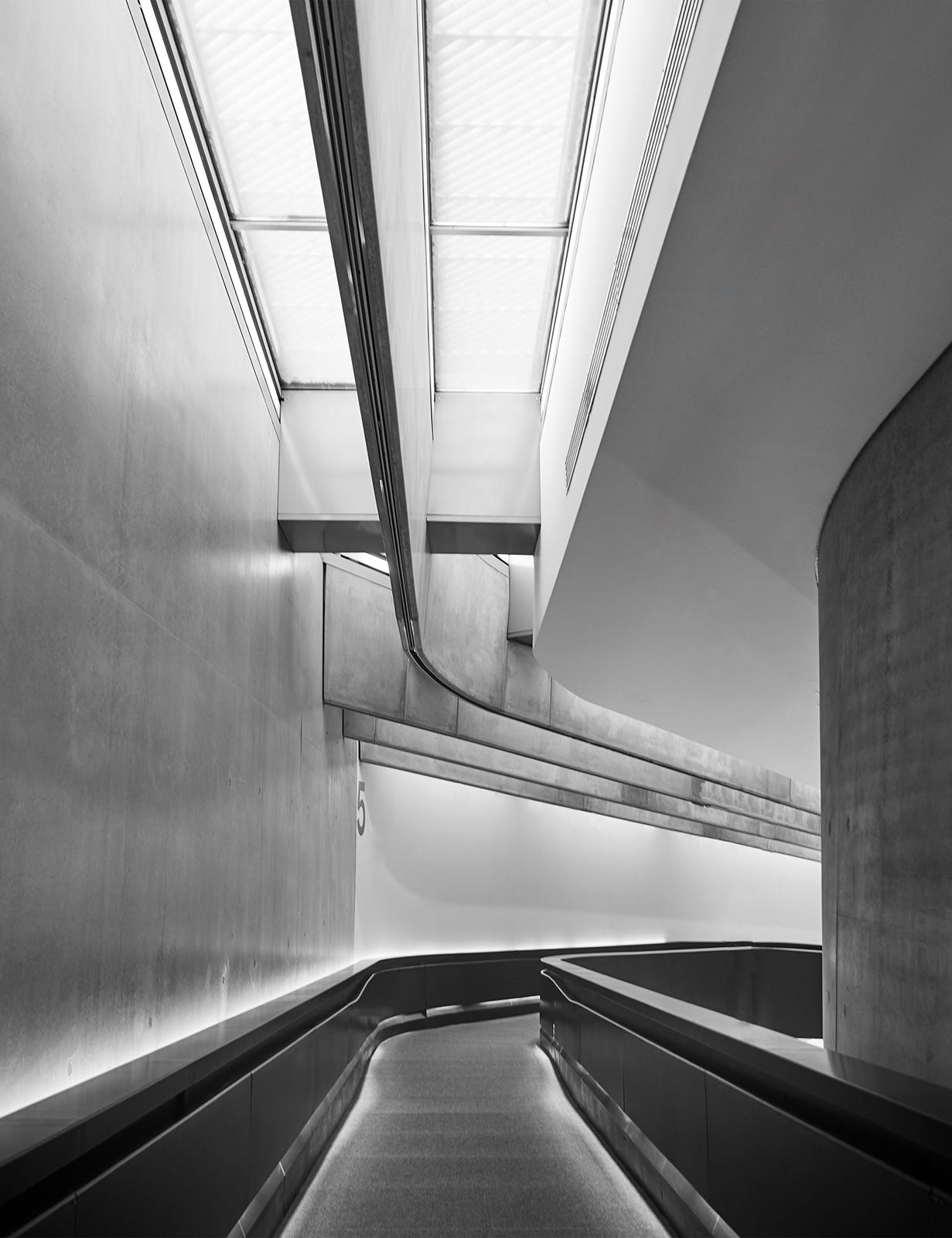
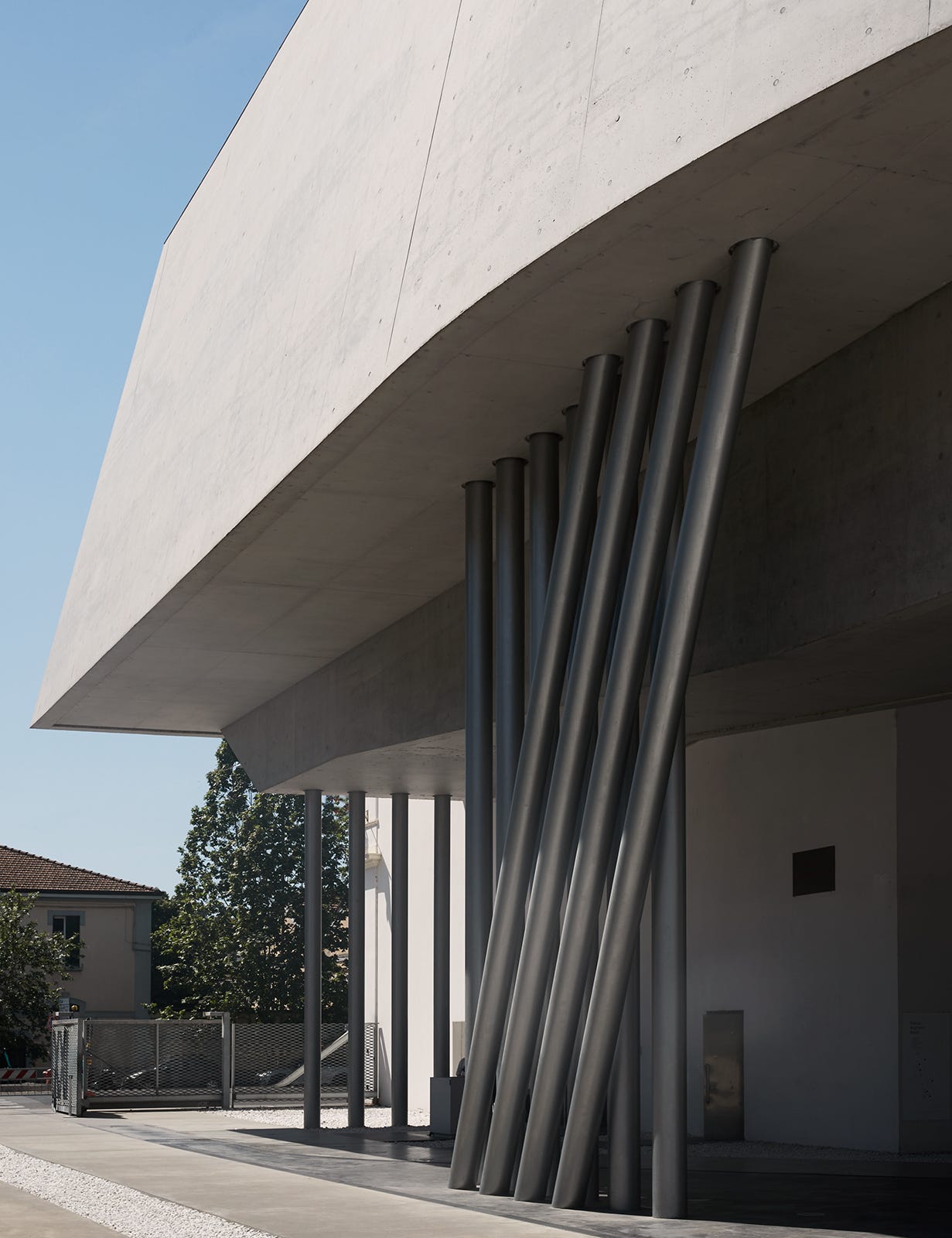
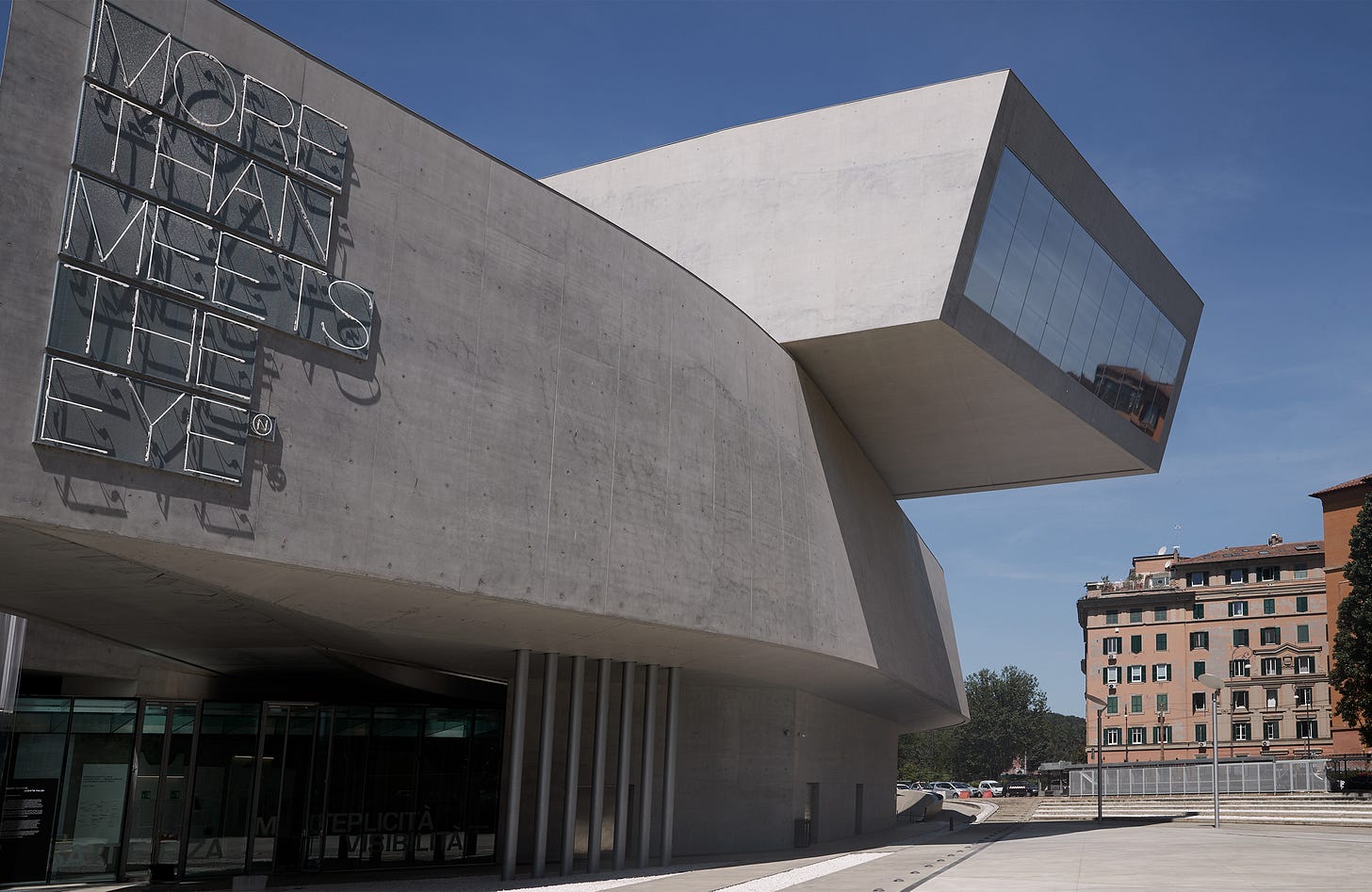
What stunning pictures! I adore EUR. I find it a relaxing counterpoint to all of Rome's curvy Baroque excess.
Thanks for taking me on an architectural funride!
Cheers